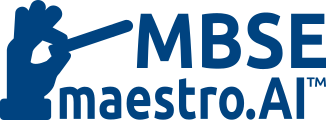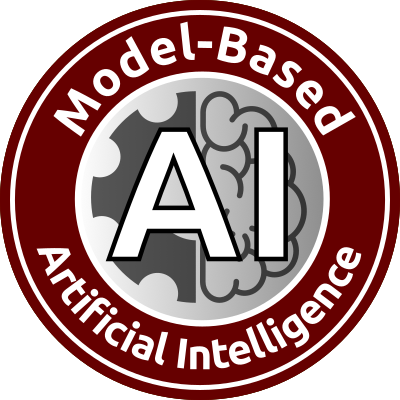SysML Tools FAQ: What is the best free SysML modeling tool?
Please contact us if you have any constructive recommendations to correct, clarify, add to, or otherwise improve this section.
SysML Tools FAQ
The Systems Modeling Language (SysML) is a general-purpose architecture modeling language for specifying Systems Engineering applications.
- SysML supports the specification, analysis, design, verification, and validation of a broad range of systems and systems-of-systems. These systems may include hardware, software, information, processes, personnel, and facilities.
- SysML is a dialect of UML 2, and is defined as a UML 2 Profile (Profile = UML customization that uses Stereotypes, Tagged Values, and Constraints).
- Sysml is an enabling technology for Model-Based Systems Engineering (MBSE).
SysML Origins: The SysML was original developed by the SysML Partners' open-source specification project, which was initiated in 2003 in response to OMG's "UML for Systems Engineering" Request for Proposals (RFP). The SysML contains nine diagram types, seven of which it shares with its UML 2 parent language, along with one tabular notation (Allocation tables). These seven shared diagrams are: Use Case, Block (nee Class in UML), Internal Block (nee Composite Structure in UML), Activity, Sequence, and State Machine. The two new diagrams that SysML contributes are Requirement (derived from Class diagrams) and Parametric (derived from Composite Structure diagram).
Why use SysML?: If you are a Systems Engineer and want to improve the precision and efficacy of your communcations with fellow Systems Engineers and other system and business stakeholders, then SysML is an excellent choice for a lingua franca (If, on the other hand, you are a Software Developer or a Business Analyst who wants to improve communications with your peer and other system stakeholders, then UML or BPMN may be a better choice). Here is a list of reasons that SysML Engineers may want to use SysML and a Model-Based Systems Engineering approach for their work:
- Facilitate communication among various stakeholders across the System Development Life Cycle;
- Capture and manage corporate Intellectual Property related to system architectures, designs, and processes;
- Compare and contrast "As Is" and "To Be" solutions;
- Provide scalable structure for problem solving;
- Furnish rich abstractions to manage size and complexity;
- Explore multiple solutions or ideas concurrently with minimal risk;
- Detect errors and omissions early in the System Development Life Cycle
Specification Availability: The SysML specification is publicly available for download, and includes an open-source license for distribution and use. The most recent revision is OMG SysML v. 1.6 (see SysML Specifications page).
Further Info: For more information about the SysML language details, training, tutorials, and resources, check out the Sysml Forum web. For more information about the MBSE process details, training, tutorials, and resources, check out the MBSE Works web.
Once you make a decision to use SysML as the common specification language for your MBSE team or project, you are faced with the choice of using a drawing tool (e.g., MS Office Visio, OpenOffice Draw, GIMP, etc.) or a bona fide modeling tool to capture your SysML work artifacts.
What's the difference between a drawing tool and a visual modeling tool? While a drawing tool may provide you with a tool template that contains SysML syntax ("boxes and lines"), it isn't generally expected to enforce SysML "book-keeping" operations, which include, but are not limited to, the following:
- enforcement of syntactic (notational) and semantic well-formedness rules;
- support for large-scale model management and team modeling;
- support for bi-direction requirements traceability;
- support for simulations of Activity and Parametric diagrams
So, if you are modeling-in-the-small and are only interested in using SysML to sketch simple models for a small group (a dozen or fewer) Systems Engineers, you may find a drawing tool sufficient for your needs. However, if you need to capture the functional analysis or architecture of a complex system or system-of-systems, you will greatly benefit from the use of a bona fide SysML modeling tool!
Since SysML is a dialect of UML 2 and is relatively straightforward for UML tool vendors to implement as a UML Profile (customization), many popular UML tools also support SysML. Unfortunately, as is the case with UML tools, relatively few SysML tools are strong in all of the following evaluation categories: Usability, Functionality (Drawing & Round-Trip Engineering)), Standards Compliance & Interoperability, Team Modeling & Technical Support, and Value.
Consequently, we encourage you to read the SysML Modeling Tool Evaluation and Selection articles in this web. In addition, you will likely benefit from the SysML Tool Reviews section, which is divided into Commercial Off-the-Shelf (COTS) Software reviews and Free & Open-Source Software (FOSS) reviews, for both Editor and User Reviews.
You can find a selection of Free & Open Source Software (FOSS) SysML modeling tools in the Free & Open Source SysML Modeling Tool Reviews section.
You can find general recommendations for selecting a SysML modeling tool in the "How to Select a SysML Modeling Tool for MBSE" article.
You can find general recommendations for defining SysML modeling tool evaluation criteria in the "How to Define SysML Tool Evaluation Criteria for Your Team & Project" article.
DISCLAIMER: SysMLtools.com reviews represent the opinions of editors and its members, and are intended only as an information resource. All information and statements are subject to correction and revision. uisers of this information are encouraged to perform their own due diligence and act accordingly. (Caveat emptor!) Please read the full Disclaimer in the Terms of Use for this site and contact us regarding any additions and corrections.
OMG SYSML and UML are trademarks of the Object Management Group. All other product and service names mentioned are the trademarks of their respective companies.



